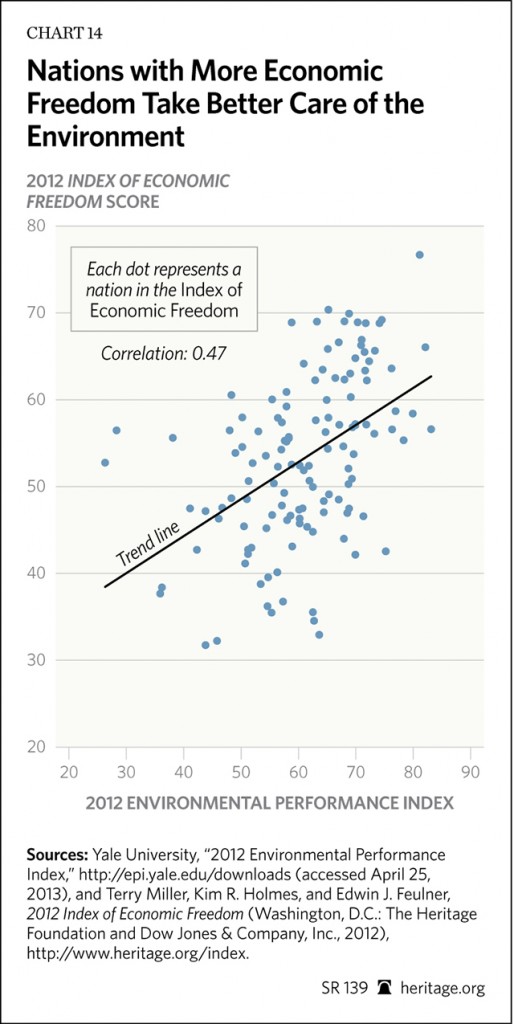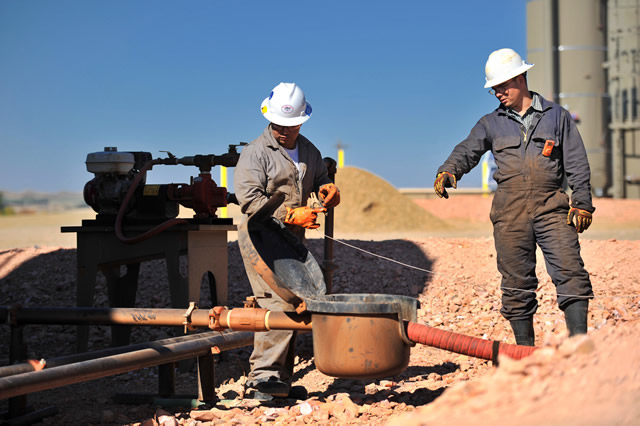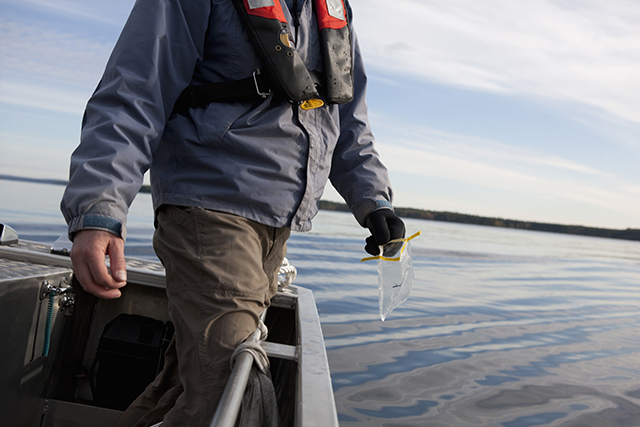1. Human freedom and prosperity lead to environmental success.
Studies show that wealthy countries are environmentally healthier countries. Able to worry less about meeting
basic needs, wealthier societies can afford to direct their attention to environmental improvement.

2. We’re not running out of resources.

Kenny
LeBaron, left, and his brother Joshua moved to North Dakota from
Minnesota to take advantage of higher salaries due to an oil boom there.
Here they service a gas and oil well near Watford City, North Dakota,
on September 27, 2011. (Glen Stubbe/Minneapolis Star Tribune/MCT)
3. The quality of our air is cleaner and safer.
Over the past 30 years (data gathered from 1980 through 2012) concentrations of each of the six common air pollutants have drastically decreased:
- Ozone: decreased by 25 percent
- Particulate Matter: 33 percent (data starting in 2000)
- Nitrogen Dioxide: 60 percent
- Sulfur Dioxide: 78 percent
- Carbon Monoxide: 83 percent
- Lead: 91 percent
4. Although tough to measure, water quality is also improving.
Americans are using water more efficiently even as population has increased, and only 9 percent of the waters of the United States are considered impaired.
5. The government owns more land than it can manage.
While the nation’s air and waters have improved in quality, the nation’s land management continues to stagnate— at best. The federal government owns some 28 percent of the United States and indirectly controls well beyond that amount through laws like the Endangered Species Act. The federal government alone owns:
- 42 percent of Arizona
- 47 percent of New Mexico
- 62 percent of Idaho and Alaska
- 81 percent of Nevada.
6. Thanks in part to the big successes made in other areas of the environment, the environmental pressure groups have pitched global warming as the next great environmental issue of the day.
The result has been heavy handed regulations that treat CO2 emissions as pollutants to be cut. Yet even if one were to assume climate alarmists’ models were correct and decide to cut all U.S. carbon emissions today—no driving or flying, no running factories, stores or homes unless they run on nuclear power, and probably best not to exhale either—this would only decrease world temperatures by 0.08 degrees Celsius by the year 2050. Former EPA administrator Lisa Jackson has herself conceded that America’s efforts alone would not meaningfully impact global CO2 levels.






No comments:
Post a Comment